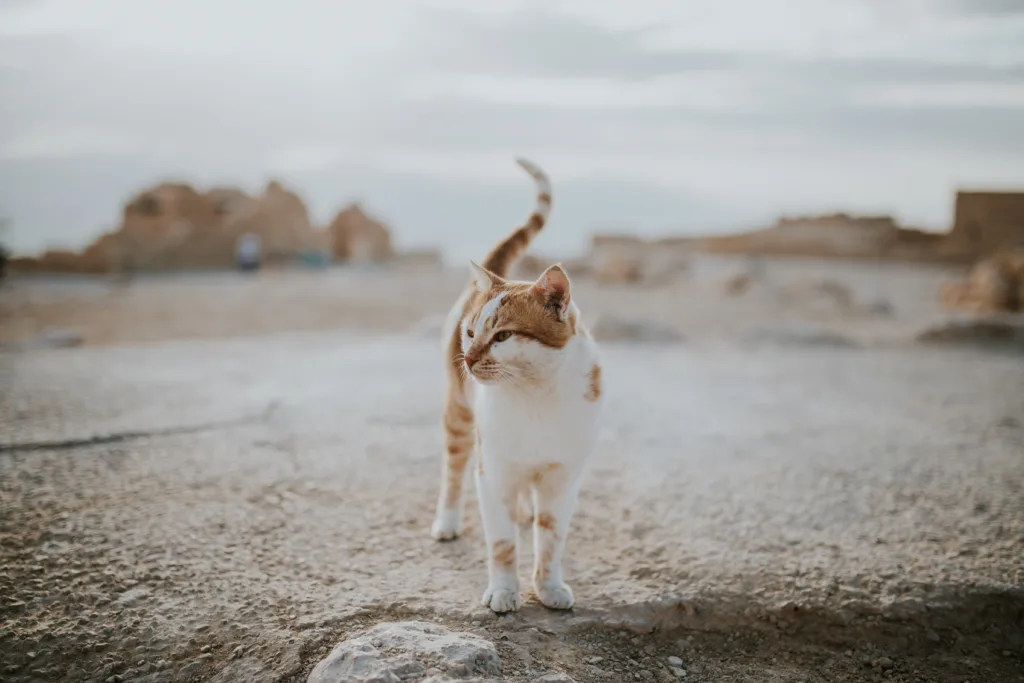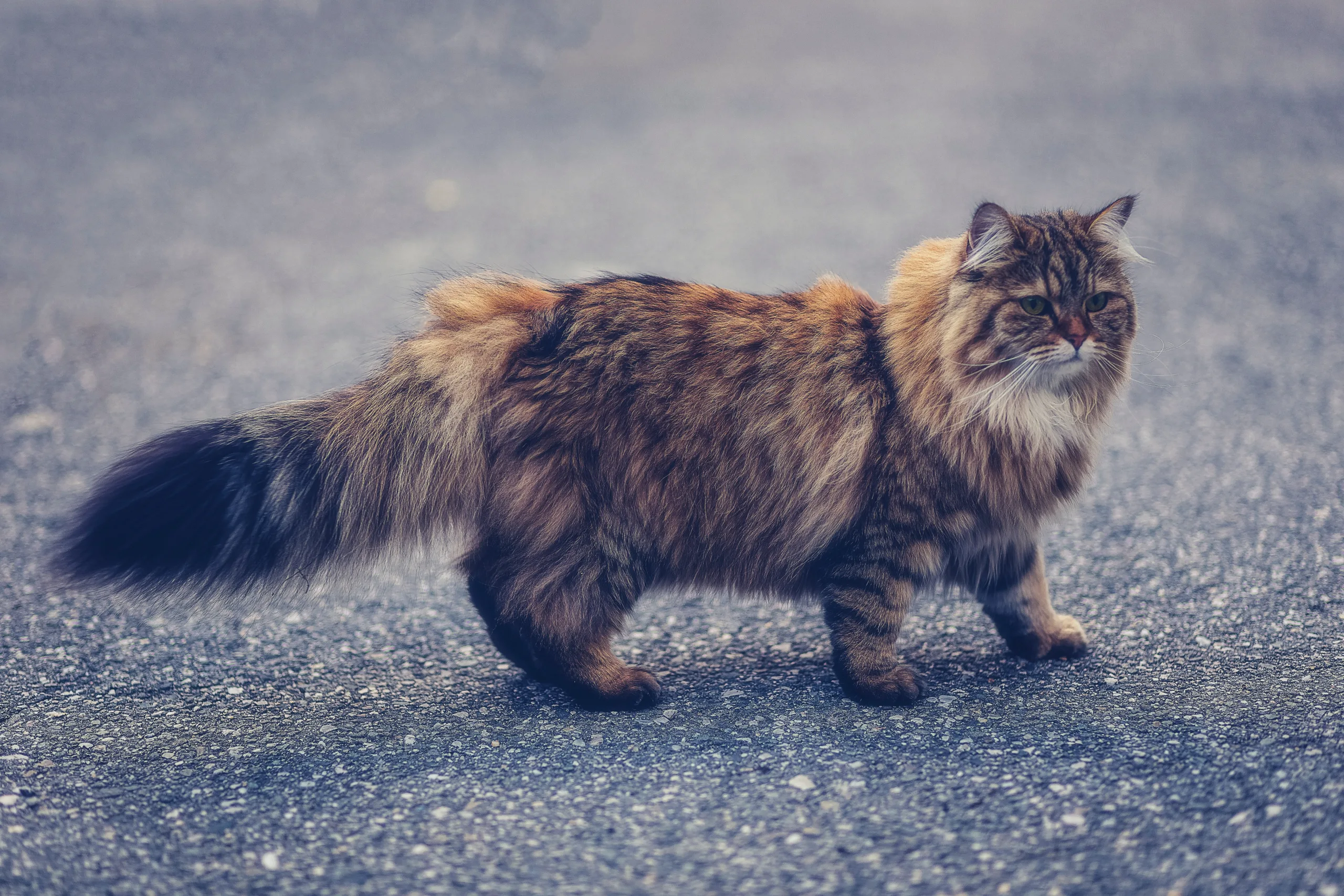Introduction of Why Do Cats Tails Fall Off
Why Do Cats Tails Fall Off: Cat tail loss can be a concerning issue for cat owners. A cat’s tail serves several important functions, including balance, communication, and overall well-being. Understanding the causes behind cat tail loss and how to address them is crucial for the health and happiness of our feline companions.
A cat’s tail is an extension of its spine, consisting of multiple vertebrae, muscles, nerves, and fur. It plays a vital role in maintaining balance, aiding in jumping and climbing, and serving as a communication tool through various tail positions and movements.
However, there are instances where a cat may experience tail loss, either partially or entirely. This can be a result of accidents, trauma, medical conditions, or behavioral issues. Identifying the causes and implementing appropriate solutions is essential for ensuring the well-being of our cats.
In the following sections, we will explore the common causes of cat tail loss, medical conditions associated with it, and provide solutions for cats experiencing tail loss. By gaining a deeper understanding of this issue, we can better care for our feline friends and help them live happy, healthy lives.
The Anatomy of a Cat’s Tail
A cat’s tail is a fascinating and integral part of its anatomy. Understanding the structure and function of a cat’s tail can provide insights into its importance and how it contributes to a cat’s overall well-being.
Structure of a Cat’s Tail
A cat’s tail is composed of several components that work together harmoniously. These include:
- Vertebrae: The tail is an extension of the cat’s spine and consists of a series of individual vertebrae. The number of vertebrae can vary among cats but typically ranges from 18 to 23. These vertebrae are interconnected by joints, allowing flexibility and movement.
- Muscles: The tail is supported by an intricate network of muscles. These muscles allow the cat to control the movement of its tail, enabling various positions and gestures. The tail muscles are responsible for swishing, curling, or wagging the tail, which are essential for communication and expressing emotions.
- Nerves: The tail is richly supplied with nerves, which play a vital role in sensory perception and coordination. The nerves in the tail allow cats to have a heightened sense of balance and spatial awareness. They also contribute to the tail’s ability to convey information through touch and movement.
- Fur: The tail is covered in fur, similar to the rest of the cat’s body. The fur on the tail provides protection from the elements and aids in thermoregulation. Additionally, the tail fur can serve as a visual indicator of a cat’s emotions, such as fluffed fur indicating fear or aggression.
Function of a Cat’s Tail
The cat’s tail serves several essential functions that are integral to its daily activities and interactions. These include:
- Balance: The tail acts as a counterbalance, helping cats maintain their balance while walking, running, or leaping. It allows them to make precise movements, navigate narrow spaces, and land gracefully.
- Communication: Cats use their tails as a means of communication. Tail positions and movements convey various messages, indicating emotions, intentions, and warnings. For example, an upright, bushy tail signals excitement or aggression, while a tucked tail may indicate fear or submission.
- Expression of Emotions: The tail is an expressive appendage that reflects a cat’s emotional state. A relaxed, gently swaying tail indicates contentment, while a vigorously wagging or thrashing tail can signify agitation or annoyance.
- Body Language: The tail forms an essential part of a cat’s body language repertoire. Along with other body postures and facial expressions, the position and movement of the tail provide valuable insights into a cat’s mood and intentions. It helps cats communicate with other animals and humans.
Understanding the intricate structure and multifunctionality of a cat’s tail highlights its significance in a cat’s life. It reinforces the importance of providing proper care and attention to this unique and expressive appendage to ensure the overall well-being and happiness of our feline companions.
Common Causes Why Do Cats Tails Fall Off
Cat tail loss can occur due to various reasons, ranging from accidents and trauma to behavioral issues. Understanding the common causes can help cat owners identify and address the underlying factors contributing to tail loss in their feline companions. Here are some common causes of cat tail loss:
- Trauma and Accidents:
- Accidents or injuries can lead to tail loss in cats. Cats may experience tail trauma from incidents such as getting caught in doors, being involved in car accidents, or falls from heights.
- Highlight the potential dangers and precautions cat owners can take to minimize the risk of accidents that may result in tail loss.
- Tail Degloving:
- Tail degloving is a condition where the skin is torn away from the tail bone, often exposing the underlying structures.
- Explain that tail degloving can occur due to accidents, animal attacks, or other traumatic incidents where the tail is forcibly pulled or trapped.
- Emphasize the importance of immediate veterinary attention to assess the severity of the degloving and provide appropriate treatment.
- Tail Amputation:
- Tail amputation may become necessary in certain situations, such as severe injuries or medical conditions affecting the tail.
- Discuss common scenarios where tail amputation is recommended by veterinarians and explain the reasons behind the procedure.
- Provide information about the tail amputation process, including anesthesia, surgery, and the expected recovery and healing period.
- Tail Biting and Self-Mutilation:
- Cats may exhibit tail biting or self-mutilation behaviors, where they chew or bite their own tails.
- Explore potential psychological or behavioral factors that can contribute to this behavior, such as stress, anxiety, or underlying medical conditions.
- Highlight the importance of consulting with a veterinarian or animal behaviorist to determine the underlying cause and develop a tailored treatment plan.
By understanding the common causes of cat tail loss, cat owners can take proactive measures to prevent accidents, seek prompt veterinary care when necessary, and address behavioral issues that may contribute to tail loss. Ensuring a safe and supportive environment for our feline companions is crucial for their overall health and well-being.
Solutions and Care for Cats with Tail Loss
Cats that have experienced tail loss require special care and support to ensure their well-being and help them adjust to the changes. Here are some solutions and care recommendations for cats with tail loss:
- Immediate First Aid:
- In the event of tail trauma or injury, it is crucial to provide immediate first aid to the cat.
- Provide step-by-step instructions on how to handle the situation, including gently examining the tail, cleaning any wounds, and applying basic first aid measures like clean bandages or sterile dressings.
- Emphasize the importance of seeking veterinary care promptly, as professional assessment and treatment are necessary to address any underlying damage or complications.
- Post-Amputation Care:
- For cats that have undergone tail amputation, proper post-operative care is essential for their recovery and well-being.
- Discuss the necessary care measures, such as keeping the incision site clean and monitoring for signs of infection.
- Provide guidance on pain relief options recommended by the veterinarian and discuss potential behavior adaptations that may be required, such as adjusting litter box accessibility or modifying play and exercise routines.
- Psychological Support and Enrichment:
- Cats may experience psychological and emotional changes following tail loss. It is important to provide them with support and enrichment to help them cope.
- Suggest strategies to promote psychological well-being, such as environmental enrichment through the use of interactive toys, scratching posts, and hiding spots.
- Encourage play therapy and interactive play sessions to engage the cat both mentally and physically.
- Recommend positive reinforcement techniques to build confidence and strengthen the bond between the cat and its owner.
By implementing these solutions and providing appropriate care, cat owners can help cats with tail loss adapt to their new circumstances and lead happy, fulfilling lives. Tail loss may require some adjustments, but with love, care, and proper support, cats can thrive and continue to enjoy a high quality of life.

FAQs on Why Do Cats Tails Fall Off
Here are answers to some frequently asked questions about Why Do Cats Tails Fall Off:
1. Is it normal for cats to lose their tail? No, it is not normal for cats to naturally lose their tails. The loss of a cat’s tail is usually a result of accidents, trauma, or medical conditions. If you notice your cat’s tail falling off or any signs of tail loss, it is important to seek veterinary attention to determine the cause and provide appropriate care.
2. Do cat tails grow back? In most cases, cat tails do not grow back once they have been lost or amputated. Unlike some reptiles, cats do not possess the ability to regenerate their tails. However, with proper care, cats can adapt to life without a tail and continue to lead a happy and fulfilling life.
3. Do cats feel their tails? Yes, cats have nerve endings in their tails, which allows them to feel sensations. The tail is a sensitive part of a cat’s body and plays a crucial role in their balance and communication. Cats are aware of the position and movement of their tails, and they use them as an important means of expression.
4. Do cats have feelings? Yes, cats have feelings. Cats are sentient beings capable of experiencing a range of emotions, including happiness, fear, anxiety, and contentment. They can form deep bonds with their human companions and exhibit behaviors that reflect their emotional state. Understanding and respecting a cat’s emotions is important for providing them with appropriate care and creating a nurturing environment.
Conclusion on Why Do Cats Tails Fall Off
In conclusion, understanding the causes, care, and support for cat tail loss is essential for cat owners. Throughout this article, we have explored various aspects related to cat tail loss and provided valuable information. Here are the key points to remember:
- Cat tails serve important functions in balance, communication, and overall well-being. The tail is composed of vertebrae, muscles, nerves, and fur, all working together to facilitate various cat behaviors.
- Common causes of cat tail loss include trauma and accidents, tail degloving, tail amputation, and tail biting/self-mutilation. Accidents and injuries can lead to tail loss, while tail degloving involves the tearing of skin from the tail bone. Tail amputation may become necessary in cases of severe injuries or medical conditions. Tail biting and self-mutilation can occur due to underlying psychological or behavioral issues.
- Solutions and care for cats with tail loss involve immediate first aid in case of trauma or injury, proper post-amputation care for cats that have undergone tail amputation, and psychological support and enrichment to help cats cope with the loss.
- It is important to provide immediate first aid for tail trauma or injury and seek veterinary care promptly to address any underlying damage or complications.
- Post-amputation care involves wound management, pain relief, and behavioral adaptations to ensure the cat’s comfort and recovery.
- Cats may require psychological support and enrichment to help them cope with tail loss. Environmental enrichment, play therapy, and positive reinforcement techniques can aid in their psychological well-being.
In all cases, it is crucial to consult with a veterinarian for personalized advice regarding your cat’s specific situation. They can provide the best guidance and recommendations tailored to your cat’s needs.
Click here for more
